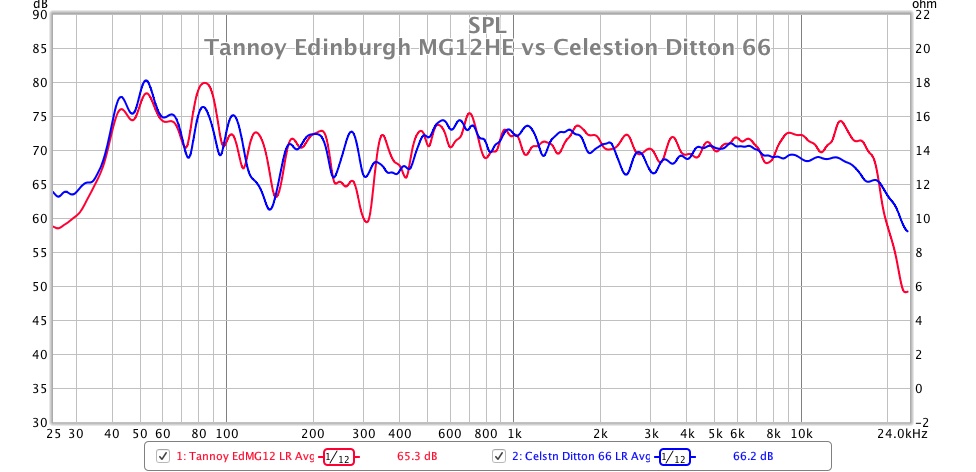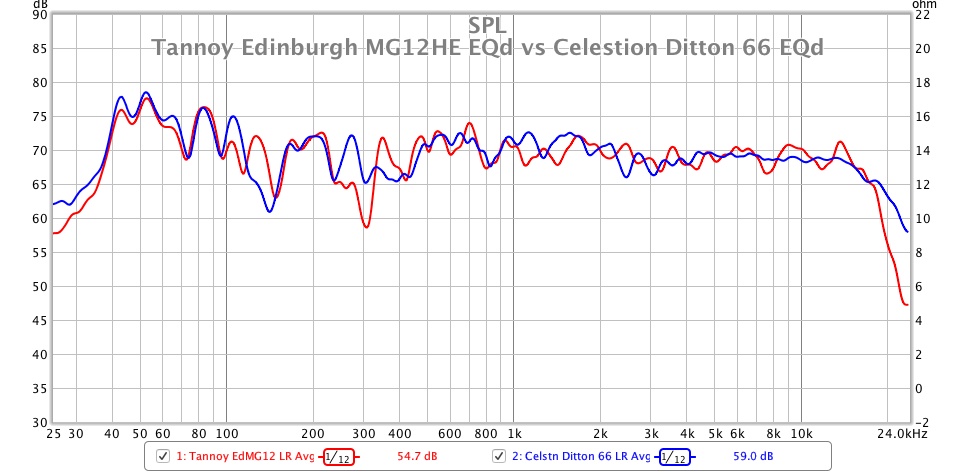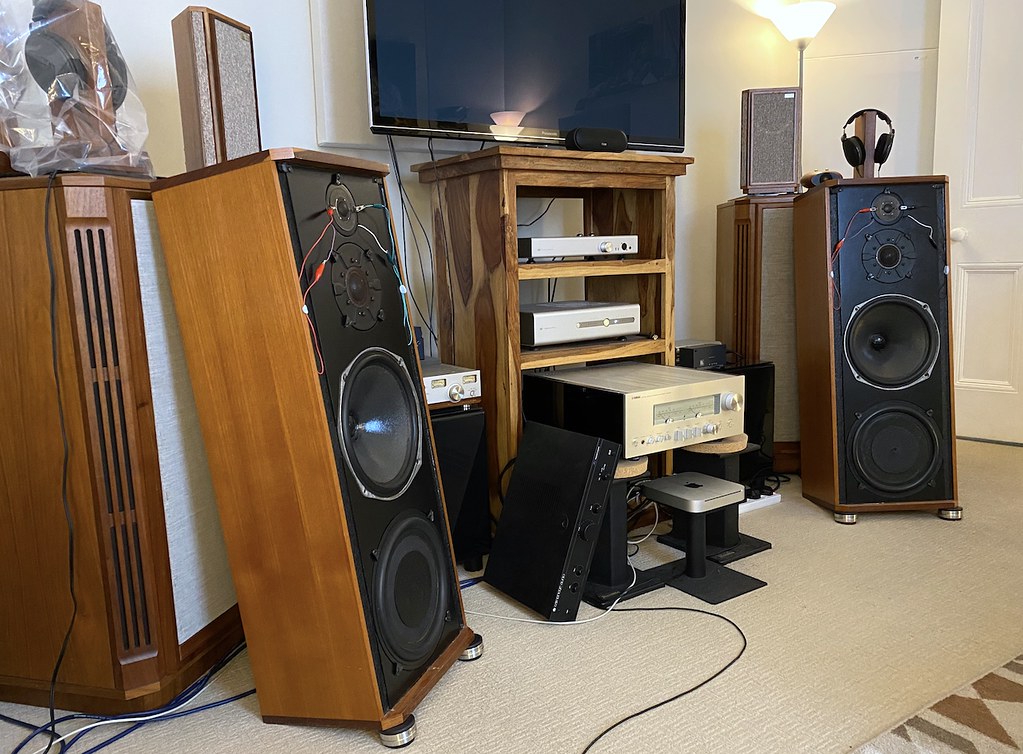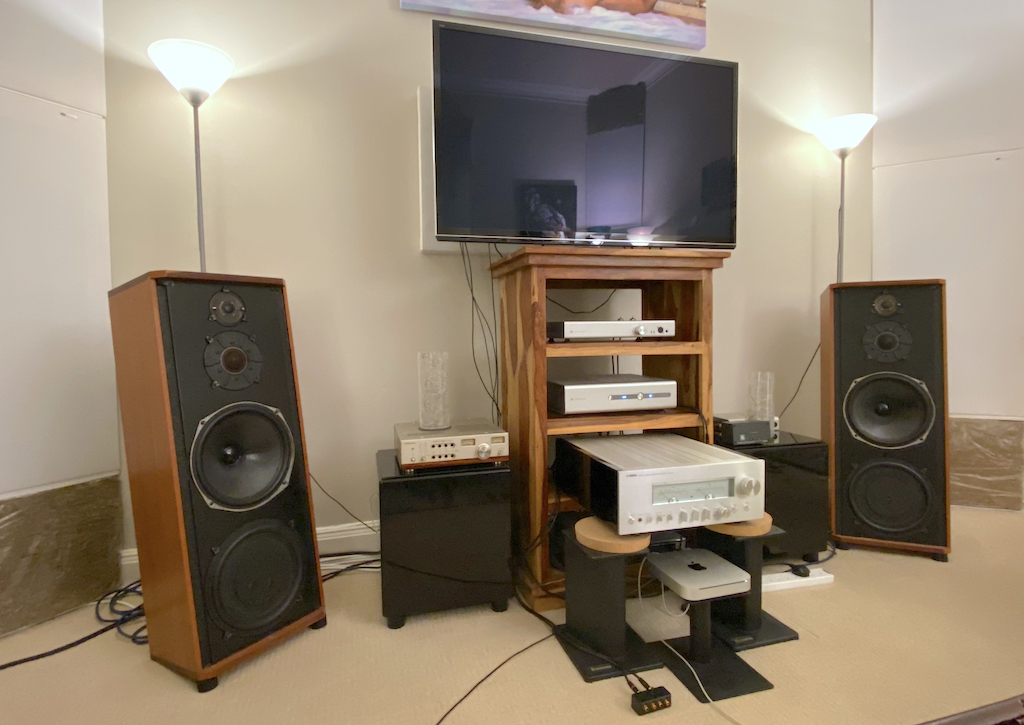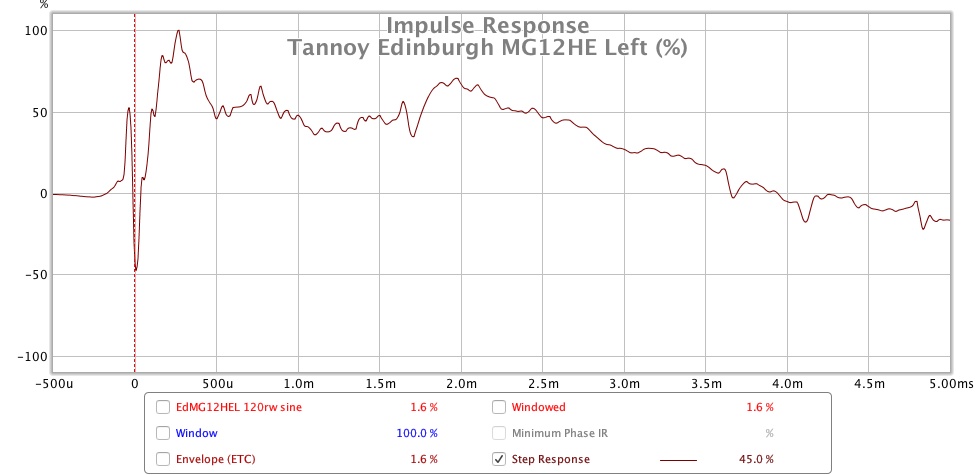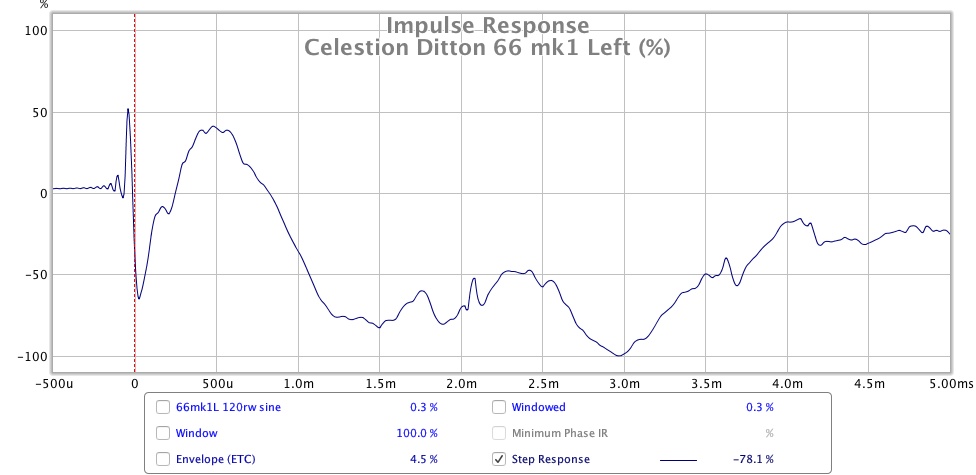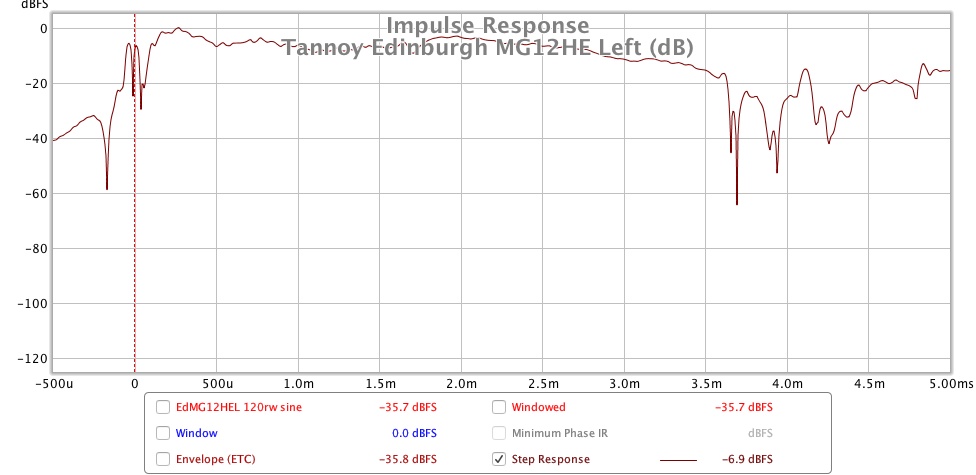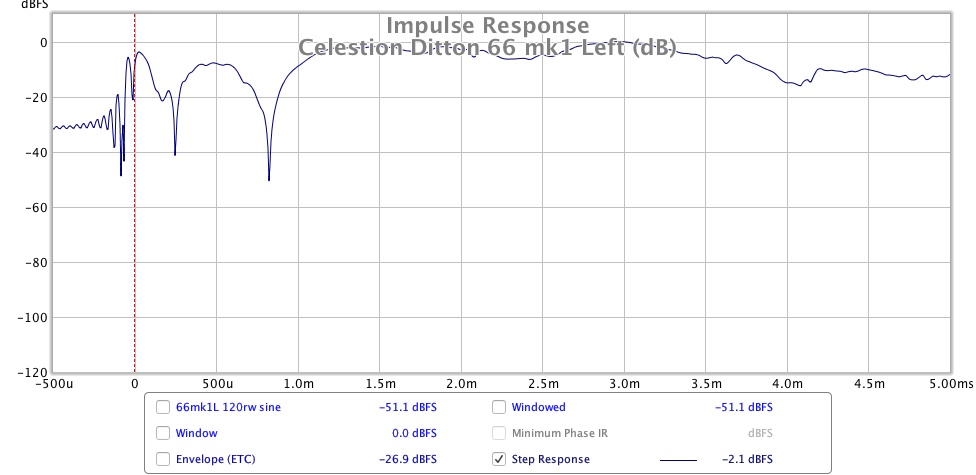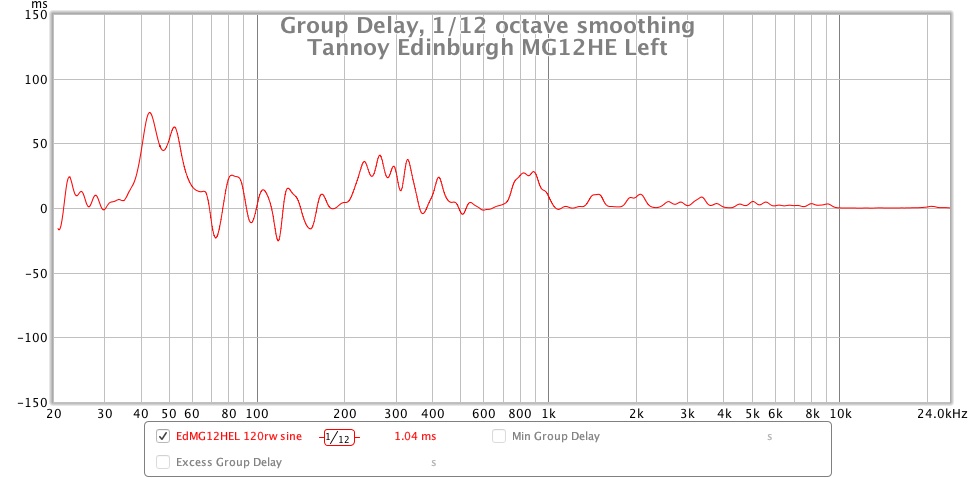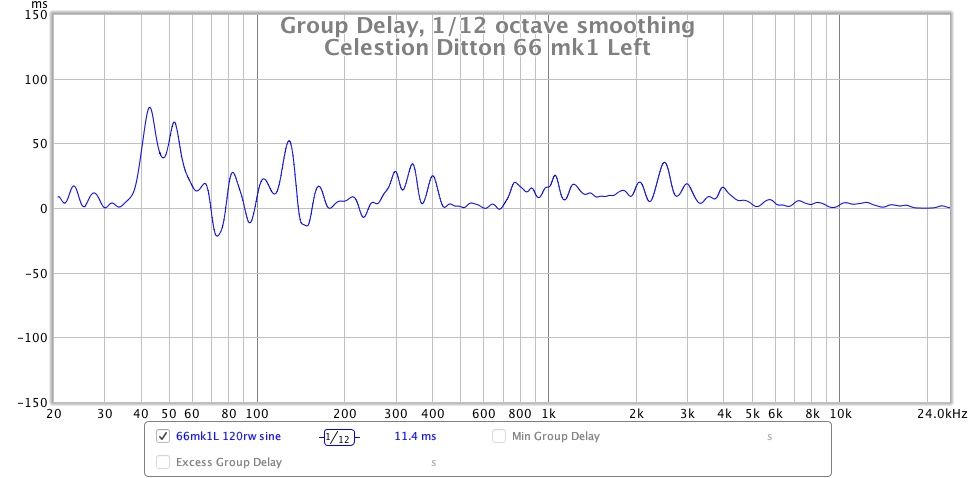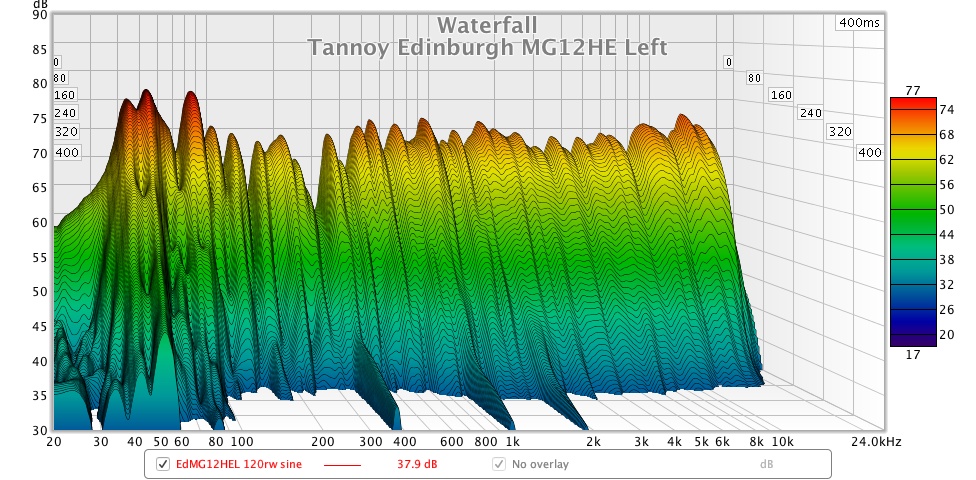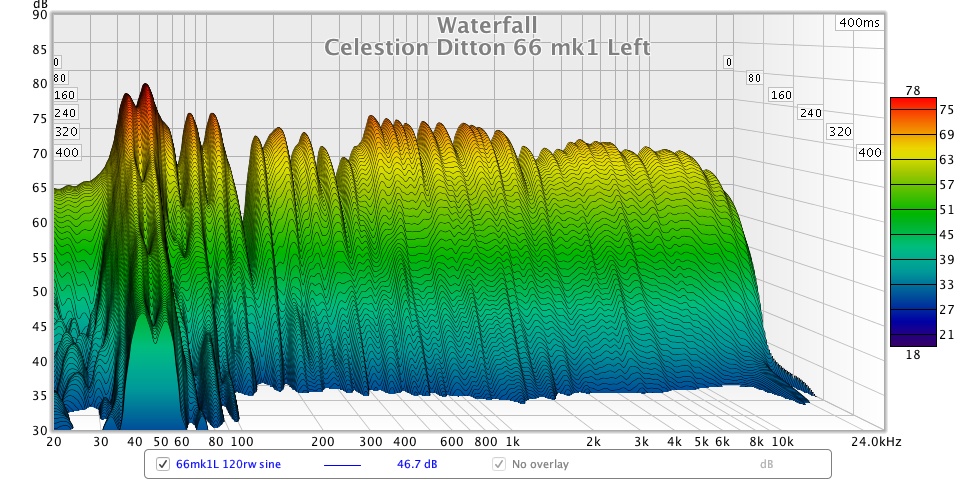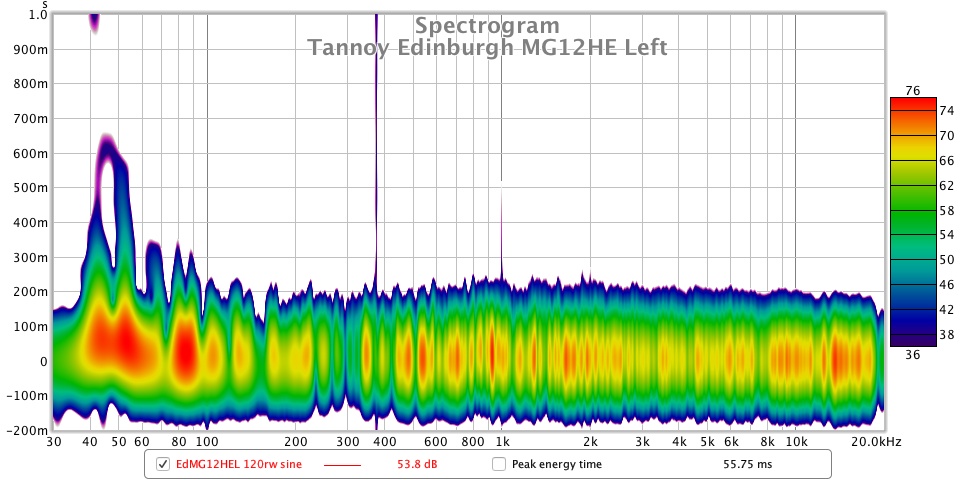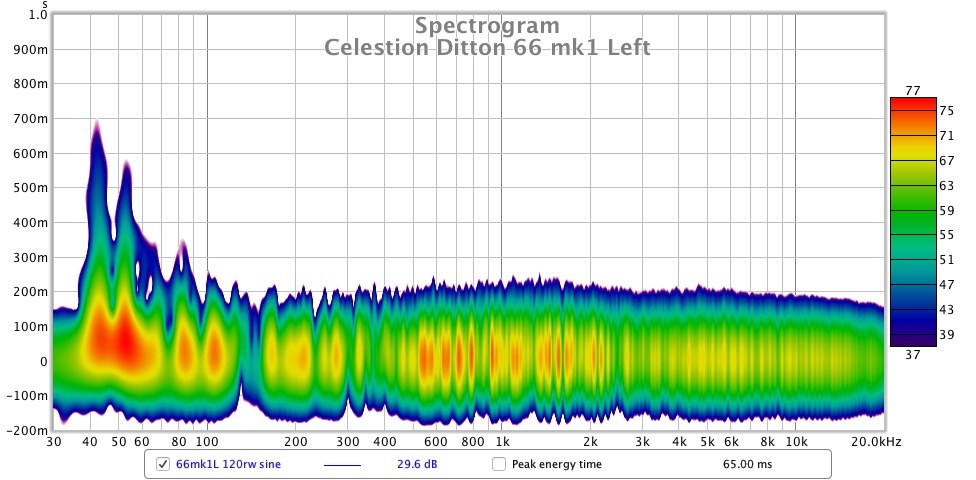ToTo Man
the band not the dog
Making some adjustments to the plywood plinths my fully-refurbished Celestion Ditton 66 stand upon provided the perfect opportunity to not only spend a couple of days re-acquainting myself with my Tannoy Edinburgh fitted with hard-edge Monitor Gold 12s and stock LSU crossovers, which have not been in rotation since early June, but also to re-visit the Energy and Rolloff settings on the LSU crossover.
Together with a dip in the response between 200Hz-400Hz (which I suspect is caused by floor bounce but wonder if it is also because I have the MGs front–mounted instead of rear-mounted?), the default ‘Level’ settings produce a somewhat thin and brittle timbre at the listening seat. Subjectively, the balance sounds tilted towards both the treble and low bass and it is lacking warmth in the upper bass and lower mids.
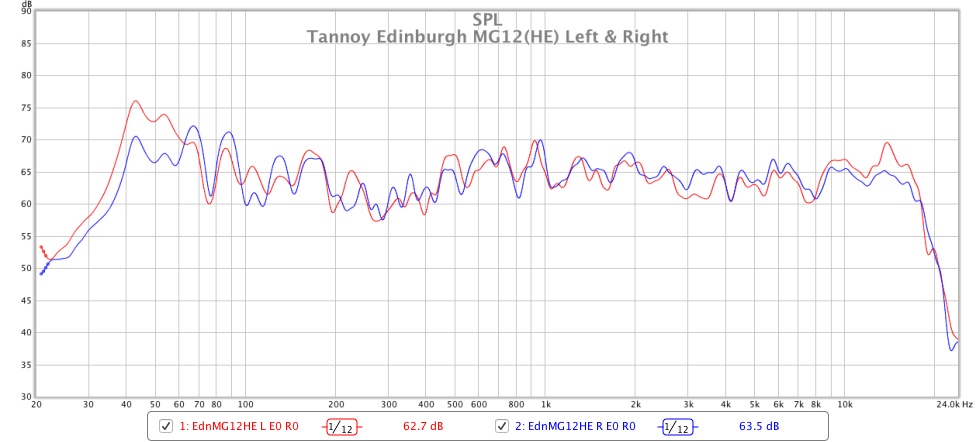
As is the way with Tannoy DCs, there is a degree of imbalance in the HF response between the two drivers, so from this point on I am just going to post the combined average response of the left and right speakers. I subjectively prefer the tonality of the right speaker through the mids and highs and the above graph illustrates why. The weaker bass response of the right Tannoy is purely due to room geometry, there is a door beside this speaker. Strangely, it does not affect the right Celestion as badly, which must be because the latter is positioned about 40cm further out from the front wall and about 20cm further out from the side wall that the door is on.
After trying several Energy and Rolloff combinations, I settled on the Rolloff at Level and the Energy set one click below Level. Although the top octave is still a little too outlined for my tastes, the overall presentation sounds noticeably more relaxed and less etched than the Level setting. Turning the Energy down two clicks below Level makes the tonal balance too syrupy and the presentation becomes too recessed and distant.
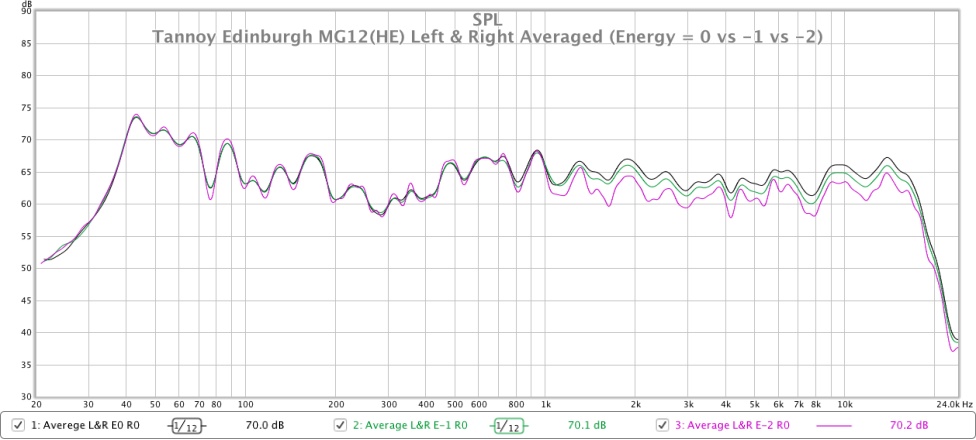
The Rolloff’s effect begins at 2kHz and just a single click causes -4dB attenuation by 10kHz, which is far too extreme to be of practical use IMO. It would have been much better to have more subtle rolloff slopes with a turnover frequency that matches the rising on-axis HF response. E.g. each click could have been designed to effect a -1dB change in the HF response and come into play at 4kHz or 5kHz instead of 2kHz so that it doesn’t affect as much of the midrange and either compound or fight against the effect of the Energy control.
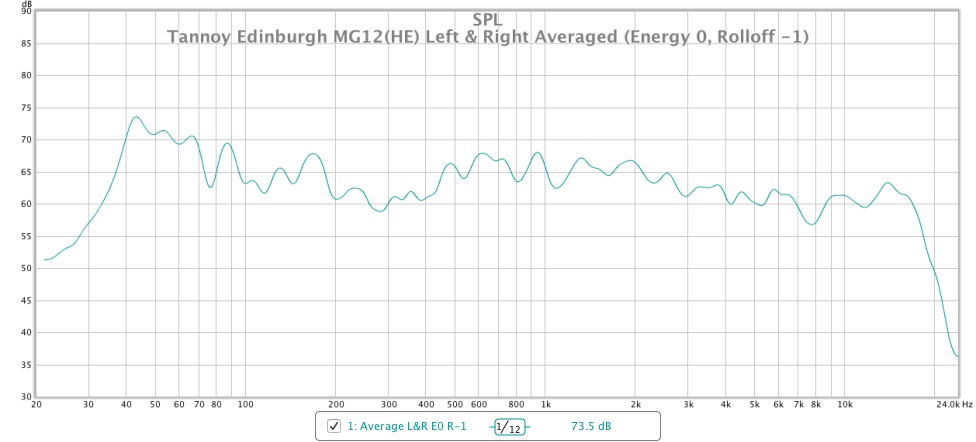
It is possible to offset/lessen the effect of the Rolloff by increasing the Energy. YMMV, but with my MG12s this has the effect of accentuating a peak between 1kHz-2.5kHz which colours the response in an undesirable way (I wonder if this is what is referred to as the “Tannoy honk”?!).
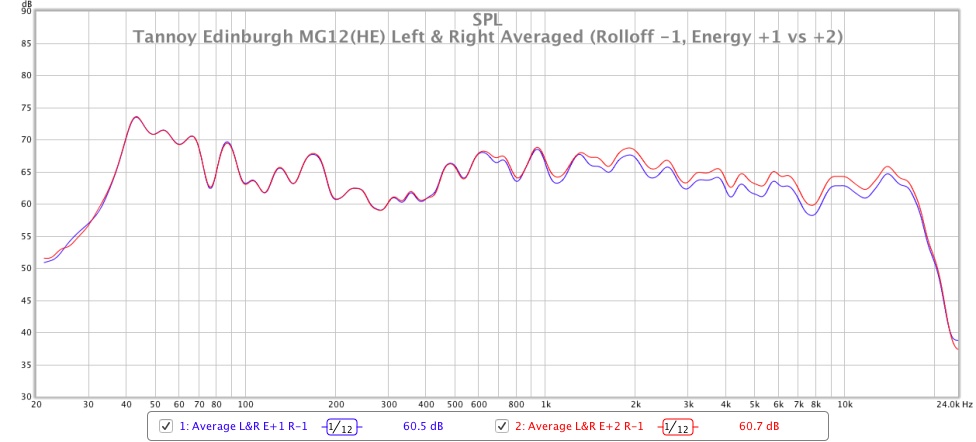
A better solution IMO is simply to leave the Rolloff set to Level and instead toe-in or toe out the cabs so that the beams of the HF units either cross sufficiently in front of or behind the listening position to achieve a natural in-room HF rolloff. Unfortunately, due to my room layout and speaker placement I can do neither; the speakers are too far apart to toe-out without causing a “hole” in the middle of the soundstage, and they are too big to toe-in without ending up obstructing the opening and closing of my room’s door! I shall therefore happily continue to use EQ to slope the >9kHz response down by 1 or 2 dB.
Moving onto comparison with the Celestion Ditton 66. Both speakers obviously have their own particular colourations that can either be marginalised or exacerbated depending on positioning. However, the Tannoys are more forgiving in this respect; the Celestions have a much smaller margin for error.
When I moved the Celestions out of the way to listen to the Tannoys, I placed them against the side wall (where speakers like the JR149/JR150 perform superbly) and I reduced the height of their stands by 2/3rds to make it an easier lift on and off for my dad. With the tweeters now at ear level and the bass reinforced by closer wall and floor placement, I hardly recognised them as the same speaker. They sounded dreadfully coloured, muddy and veiled. Never have I owned a speaker that has been such a chameleon with regards to vertical placement, I know I’ve banged on about it in the past but the 66 really wants to be listened to on vertical axis with the midrange driver or else it refuses to reveal its full potential.
Despite a lift at 6kHz that’s part of the 66 tuning, I find the Celestions a smoother and easier listen than the Tannoys. Don’t mistake this for a polite warmth that skirts over the finer details, the Celestions are incredibly open and resolving through the mids and highs. In fact, I find the Celestions fine detail resolution superior to the Tannoys. The Tannoys by comparison are a slightly rougher listen, the upper middle and high frequencies are more ragged which contributes to an edgier sound especially at higher volumes. As you can see from the following graph, the Celestions also suffer from what appears to be a floor bounce recession, but it doesn’t seem to be as noticeable to the ear as the Tannoys’ recession. I suspect this is partly because it only spans from 150Hz-300Hz and also because the Celestions have a softer top end. Incidentally, my ‘tweak’ to the plywood plinths (which involved raising the height by another 25mm) appears to have backfired as it has caused the null at 275Hz in the right speaker to get worse by -6dB. I think I’ll be reversing said tweak very soon! The Tannoys are better behaved than the Celestions between 100Hz-300Hz; this is in part due to me having raised the Celestions so high off the ground as they measure much louder across these frequencies when the bass drivers are closer to the floor.
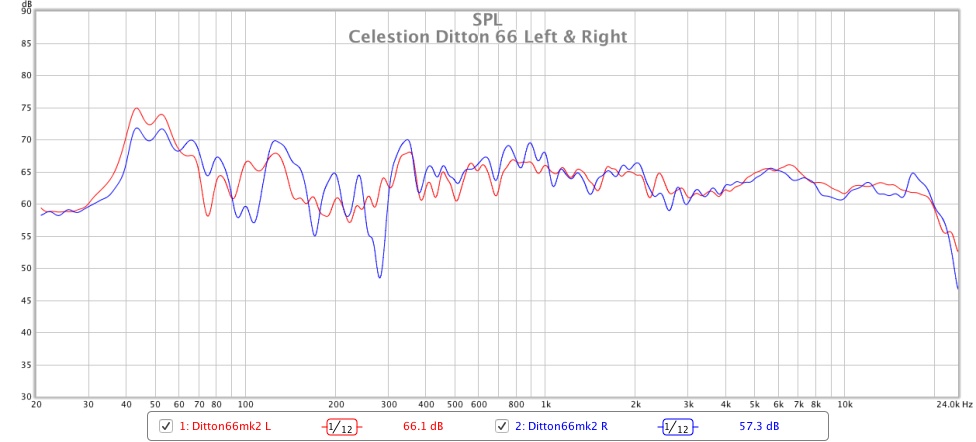
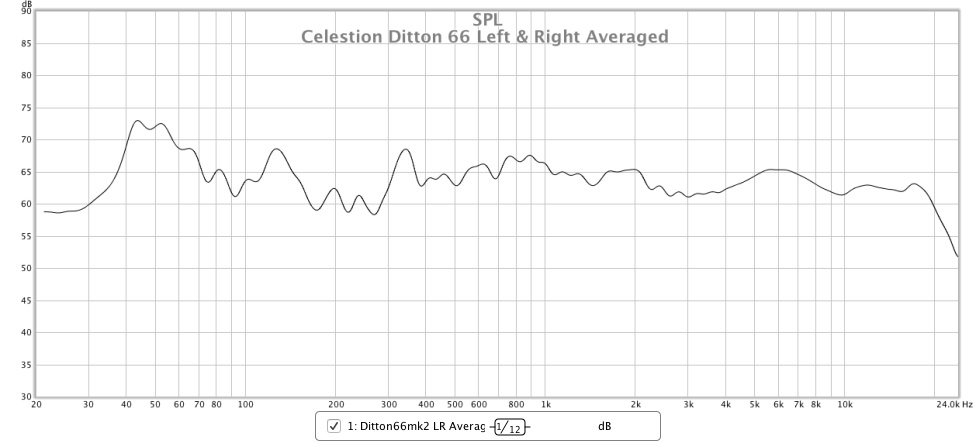
Psychoacoustically, the Tannoys make my 4.1m x 3.8m listening room sound much larger than the Celestions. The Tannoys create a wider and deeper soundstage that puts you in the middle of the concert hall or on the sofa at the back of the control room, whereas the Celestions provide a front row ticket or place you in the studio engineer’s chair. The Celestions’ imaging is smaller but more precise in its castings, the Tannoys’ is larger but more diffuse.
These differences in perspective and imaging may or may not be partly due to the Celestions being physically closer (by around 40cm) to my listening seat than the Tannoys, which also means my side wall absorption panels are controlling more of their lateral reflections. I also have the Tannoys and Celestions at different heights. The centre of the Tannoy HF horn is roughly at the height of the Celestion bass driver, so you could argue that the Celestions have an unfair advantage of being able to throw a taller image. For a fairer comparison I’d need to pull the Tannoys forward to the Celestions’ position and raise them up by almost 30cm. However, unless my Dad necks a dozen cans of Popeye’s spinach, I suspect that won’t be happening any time soon!
Both speakers have impressively smooth off-axis dispersion in the horizontal field, but I’d probably give the nudge to the Tannoys' ability retain even more of its on-axis response than the Celestions (though I suspect the Tannoy is aided here by its rising on-axis HF response!). Where the Tannoys do hold a significant advantage over the Celestions is vertical dispersion, which is almost as good as its horizontal dispersion, and thus accommodates a much broader range of listening heights.
In terms of power input sensitivity, correct me if I’m wrong @cooky1257 but I believe the hard-edge MG12 is rated 93dB/1w/1m when mounted in a standard (i.e. non-horn) enclosure. The official Celestion Ditton 66 spec is 4.8 watts for 90dB/1m, which if my math is correct equates to around 83.5dB/1w/1m. I’ve always suspected the Tannoys to be more efficient than the Celestions, especially when the Energy control is set to Level, but to what extent is difficult to say given that they are always 40cm further away from me when I listen to them. There is however NO WAY the Celestions are as inefficient as 83.5dB! If the Tannoys are 93dB then I suspect the Celestions aren’t any lower than 90dB/1w. If anyone wants to have a go at establishing the sensitivities from the above graphs then knock yourselves out, I intentionally used the same volume setting for all measurements, but remember to adjust for the Celestions being 40cm closer to the listening seat.
In terms of a frequency response comparison between the Celestions and Tannoys after lowering the Tannoy’s Energy setting by one click, I was rather surprised to find more similarities than I expected. For simplicity I’ve used the L&R Averaged measurement for each pair of speakers and have aligned the responses so that they match up at my 53Hz axial height mode, which should (in theory) be the same for both pairs given that the bass drivers are roughly at the same height above the floor. Ignoring the unsurprisingly higher overall LF output from the Tannoys due to closer wall placement, the main differences to my eyes is that the Celestions have: 1) a BBC-esque upper midrange dip; 2) a more typical in-room HF rolloff; and 3) a generally smoother response through the mids and highs with smaller peaks and troughs. Other than that they are very similar, which is quite remarkably really given how different the designs are!
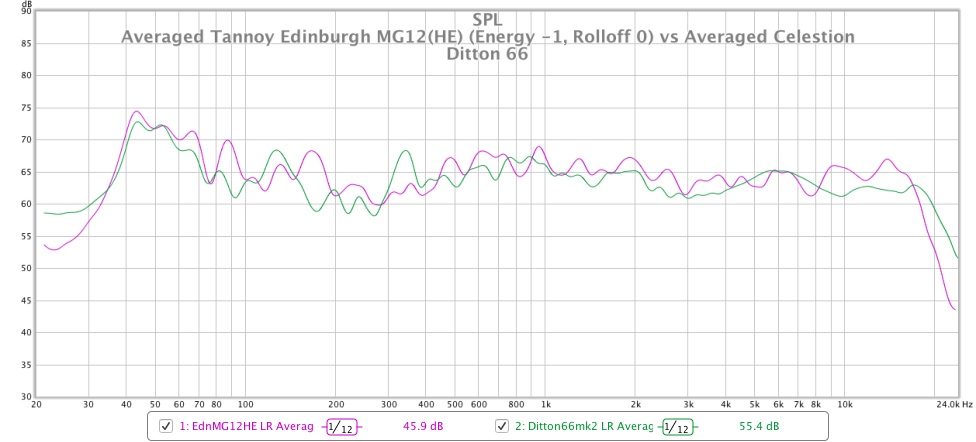
After a couple of days of listening to the Tannoys and a minor EQ tweak to knock a couple of dBs off the top octave, my ears had completely adjusted to their presentation and I was really enjoying listening to them. I’d forgotten just how satisfyingly room-filling they were! I then reinstated my Celestions and to my surprise did not experience the usual jarring “whoa this sounds a bit alien!” reaction I normally get when I switch speakers without allowing for an acclimatisation period. Instead, the switchover seemed a very natural one. However, the first two or three tracks I played on the Celestions were enough to validate the impressions I wrote earlier on. Suspension of disbelief is the acid test I suspect most audiophiles are (or perhaps ought to be!) guided by, and I find it slightly easier to suspend my disbelief when listening to the Celestions, and that’s even before tweaking with EQ. Both speakers are outstanding though and I could happily live with either, so the ability to have both at my disposal is a bonus!
I must also qualify my preceding impressions by disclosing that my fully-refurbished Celestions have received far more fettling attention than my Tannoys. It is therefore entirely possible that re-capping the LSU crossovers and/or playing around with positioning may narrow or even reverse the preference gap. I also have a nicely-matched pair of rubber–surround MG12s which I have yet to try in the Edinburgh cabinets. This will be a priority for next year…
The final advantage of the Celestions, and the one my dad is most grateful for(!), is they are far more manageable to lift than the Tannoys and occupy a much smaller footprint. I am seriously considering a smaller pair of enclosures for my MG12s to make future experiments easier. I have a pair of DIY enclosures built to ported-Lancaster spec but with slightly thicker chipboard walls lined with exposed pink fibreglass instead of the stock pillow-encased wool (these DIY enclosures are what my hard-edged MG12s originally came in). I am concerned these may be a downgrade from the Edinburghs and introduce colourations similar to my MG15s in Lancaster enclosures. It’s been too many years since I heard my MG12s in these DIY Lancaster enclosures to recall exactly how they sounded, but I reckon they were a bit cleaner than my MG15s. I’m not sure if fibreglass in a ported enclosure would do my lungs any favours (the port is covered with grille cloth but how many particles this constrains is anyone’s guess!).
Anyway I hope you find the above musings of interest. I hadn’t planned on penning a 2,000 word essay when I started this post, but I ought to have known better as I’ve never been one to do things half-@rsed!….
EDIT - I don't have an up-to-date photo of a tidy room so this shot from last year will need to do. The Celestions are pictured with the grilles on but my comparisons were done with the grilles off as they are more resolving this way. The grille material on the Edinburghs is vintage stock I bought off eBay about 10 yrs ago from 'mainlytannoy' (his user ID back then was 'betterbyvalves') and is sadly no longer available. It is a natural composition and very shear but is a pig to work with as it has no stretch and will split if pulled too tight. Beautiful to look at though!
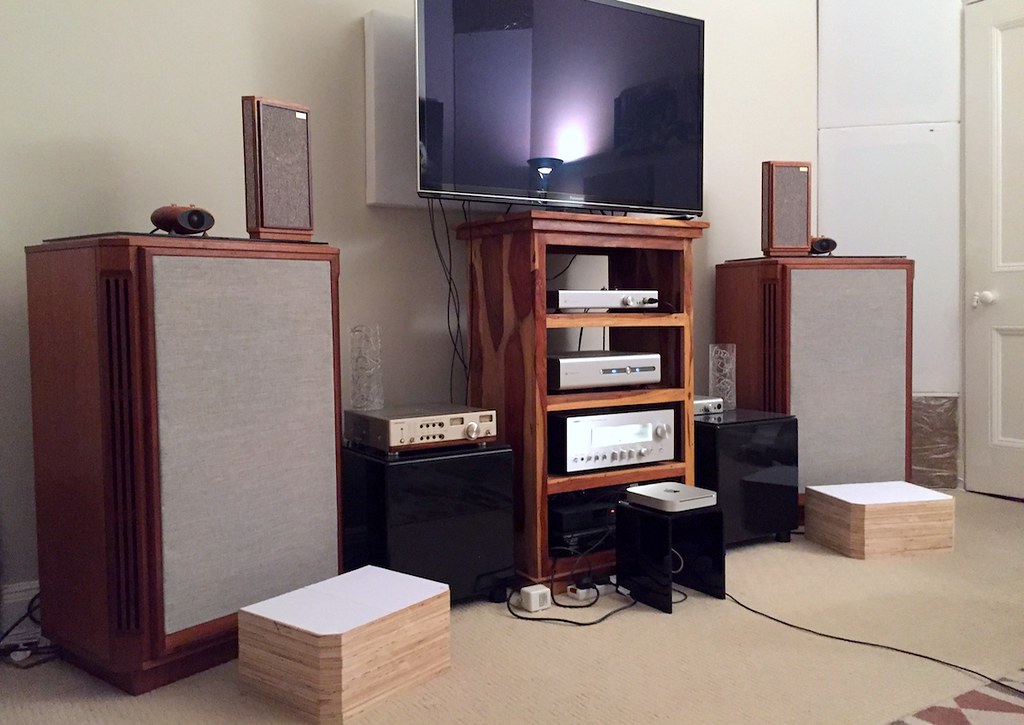

Together with a dip in the response between 200Hz-400Hz (which I suspect is caused by floor bounce but wonder if it is also because I have the MGs front–mounted instead of rear-mounted?), the default ‘Level’ settings produce a somewhat thin and brittle timbre at the listening seat. Subjectively, the balance sounds tilted towards both the treble and low bass and it is lacking warmth in the upper bass and lower mids.

As is the way with Tannoy DCs, there is a degree of imbalance in the HF response between the two drivers, so from this point on I am just going to post the combined average response of the left and right speakers. I subjectively prefer the tonality of the right speaker through the mids and highs and the above graph illustrates why. The weaker bass response of the right Tannoy is purely due to room geometry, there is a door beside this speaker. Strangely, it does not affect the right Celestion as badly, which must be because the latter is positioned about 40cm further out from the front wall and about 20cm further out from the side wall that the door is on.
After trying several Energy and Rolloff combinations, I settled on the Rolloff at Level and the Energy set one click below Level. Although the top octave is still a little too outlined for my tastes, the overall presentation sounds noticeably more relaxed and less etched than the Level setting. Turning the Energy down two clicks below Level makes the tonal balance too syrupy and the presentation becomes too recessed and distant.

The Rolloff’s effect begins at 2kHz and just a single click causes -4dB attenuation by 10kHz, which is far too extreme to be of practical use IMO. It would have been much better to have more subtle rolloff slopes with a turnover frequency that matches the rising on-axis HF response. E.g. each click could have been designed to effect a -1dB change in the HF response and come into play at 4kHz or 5kHz instead of 2kHz so that it doesn’t affect as much of the midrange and either compound or fight against the effect of the Energy control.

It is possible to offset/lessen the effect of the Rolloff by increasing the Energy. YMMV, but with my MG12s this has the effect of accentuating a peak between 1kHz-2.5kHz which colours the response in an undesirable way (I wonder if this is what is referred to as the “Tannoy honk”?!).

A better solution IMO is simply to leave the Rolloff set to Level and instead toe-in or toe out the cabs so that the beams of the HF units either cross sufficiently in front of or behind the listening position to achieve a natural in-room HF rolloff. Unfortunately, due to my room layout and speaker placement I can do neither; the speakers are too far apart to toe-out without causing a “hole” in the middle of the soundstage, and they are too big to toe-in without ending up obstructing the opening and closing of my room’s door! I shall therefore happily continue to use EQ to slope the >9kHz response down by 1 or 2 dB.
Moving onto comparison with the Celestion Ditton 66. Both speakers obviously have their own particular colourations that can either be marginalised or exacerbated depending on positioning. However, the Tannoys are more forgiving in this respect; the Celestions have a much smaller margin for error.
When I moved the Celestions out of the way to listen to the Tannoys, I placed them against the side wall (where speakers like the JR149/JR150 perform superbly) and I reduced the height of their stands by 2/3rds to make it an easier lift on and off for my dad. With the tweeters now at ear level and the bass reinforced by closer wall and floor placement, I hardly recognised them as the same speaker. They sounded dreadfully coloured, muddy and veiled. Never have I owned a speaker that has been such a chameleon with regards to vertical placement, I know I’ve banged on about it in the past but the 66 really wants to be listened to on vertical axis with the midrange driver or else it refuses to reveal its full potential.
Despite a lift at 6kHz that’s part of the 66 tuning, I find the Celestions a smoother and easier listen than the Tannoys. Don’t mistake this for a polite warmth that skirts over the finer details, the Celestions are incredibly open and resolving through the mids and highs. In fact, I find the Celestions fine detail resolution superior to the Tannoys. The Tannoys by comparison are a slightly rougher listen, the upper middle and high frequencies are more ragged which contributes to an edgier sound especially at higher volumes. As you can see from the following graph, the Celestions also suffer from what appears to be a floor bounce recession, but it doesn’t seem to be as noticeable to the ear as the Tannoys’ recession. I suspect this is partly because it only spans from 150Hz-300Hz and also because the Celestions have a softer top end. Incidentally, my ‘tweak’ to the plywood plinths (which involved raising the height by another 25mm) appears to have backfired as it has caused the null at 275Hz in the right speaker to get worse by -6dB. I think I’ll be reversing said tweak very soon! The Tannoys are better behaved than the Celestions between 100Hz-300Hz; this is in part due to me having raised the Celestions so high off the ground as they measure much louder across these frequencies when the bass drivers are closer to the floor.


Psychoacoustically, the Tannoys make my 4.1m x 3.8m listening room sound much larger than the Celestions. The Tannoys create a wider and deeper soundstage that puts you in the middle of the concert hall or on the sofa at the back of the control room, whereas the Celestions provide a front row ticket or place you in the studio engineer’s chair. The Celestions’ imaging is smaller but more precise in its castings, the Tannoys’ is larger but more diffuse.
These differences in perspective and imaging may or may not be partly due to the Celestions being physically closer (by around 40cm) to my listening seat than the Tannoys, which also means my side wall absorption panels are controlling more of their lateral reflections. I also have the Tannoys and Celestions at different heights. The centre of the Tannoy HF horn is roughly at the height of the Celestion bass driver, so you could argue that the Celestions have an unfair advantage of being able to throw a taller image. For a fairer comparison I’d need to pull the Tannoys forward to the Celestions’ position and raise them up by almost 30cm. However, unless my Dad necks a dozen cans of Popeye’s spinach, I suspect that won’t be happening any time soon!
Both speakers have impressively smooth off-axis dispersion in the horizontal field, but I’d probably give the nudge to the Tannoys' ability retain even more of its on-axis response than the Celestions (though I suspect the Tannoy is aided here by its rising on-axis HF response!). Where the Tannoys do hold a significant advantage over the Celestions is vertical dispersion, which is almost as good as its horizontal dispersion, and thus accommodates a much broader range of listening heights.
In terms of power input sensitivity, correct me if I’m wrong @cooky1257 but I believe the hard-edge MG12 is rated 93dB/1w/1m when mounted in a standard (i.e. non-horn) enclosure. The official Celestion Ditton 66 spec is 4.8 watts for 90dB/1m, which if my math is correct equates to around 83.5dB/1w/1m. I’ve always suspected the Tannoys to be more efficient than the Celestions, especially when the Energy control is set to Level, but to what extent is difficult to say given that they are always 40cm further away from me when I listen to them. There is however NO WAY the Celestions are as inefficient as 83.5dB! If the Tannoys are 93dB then I suspect the Celestions aren’t any lower than 90dB/1w. If anyone wants to have a go at establishing the sensitivities from the above graphs then knock yourselves out, I intentionally used the same volume setting for all measurements, but remember to adjust for the Celestions being 40cm closer to the listening seat.
In terms of a frequency response comparison between the Celestions and Tannoys after lowering the Tannoy’s Energy setting by one click, I was rather surprised to find more similarities than I expected. For simplicity I’ve used the L&R Averaged measurement for each pair of speakers and have aligned the responses so that they match up at my 53Hz axial height mode, which should (in theory) be the same for both pairs given that the bass drivers are roughly at the same height above the floor. Ignoring the unsurprisingly higher overall LF output from the Tannoys due to closer wall placement, the main differences to my eyes is that the Celestions have: 1) a BBC-esque upper midrange dip; 2) a more typical in-room HF rolloff; and 3) a generally smoother response through the mids and highs with smaller peaks and troughs. Other than that they are very similar, which is quite remarkably really given how different the designs are!

After a couple of days of listening to the Tannoys and a minor EQ tweak to knock a couple of dBs off the top octave, my ears had completely adjusted to their presentation and I was really enjoying listening to them. I’d forgotten just how satisfyingly room-filling they were! I then reinstated my Celestions and to my surprise did not experience the usual jarring “whoa this sounds a bit alien!” reaction I normally get when I switch speakers without allowing for an acclimatisation period. Instead, the switchover seemed a very natural one. However, the first two or three tracks I played on the Celestions were enough to validate the impressions I wrote earlier on. Suspension of disbelief is the acid test I suspect most audiophiles are (or perhaps ought to be!) guided by, and I find it slightly easier to suspend my disbelief when listening to the Celestions, and that’s even before tweaking with EQ. Both speakers are outstanding though and I could happily live with either, so the ability to have both at my disposal is a bonus!
I must also qualify my preceding impressions by disclosing that my fully-refurbished Celestions have received far more fettling attention than my Tannoys. It is therefore entirely possible that re-capping the LSU crossovers and/or playing around with positioning may narrow or even reverse the preference gap. I also have a nicely-matched pair of rubber–surround MG12s which I have yet to try in the Edinburgh cabinets. This will be a priority for next year…
The final advantage of the Celestions, and the one my dad is most grateful for(!), is they are far more manageable to lift than the Tannoys and occupy a much smaller footprint. I am seriously considering a smaller pair of enclosures for my MG12s to make future experiments easier. I have a pair of DIY enclosures built to ported-Lancaster spec but with slightly thicker chipboard walls lined with exposed pink fibreglass instead of the stock pillow-encased wool (these DIY enclosures are what my hard-edged MG12s originally came in). I am concerned these may be a downgrade from the Edinburghs and introduce colourations similar to my MG15s in Lancaster enclosures. It’s been too many years since I heard my MG12s in these DIY Lancaster enclosures to recall exactly how they sounded, but I reckon they were a bit cleaner than my MG15s. I’m not sure if fibreglass in a ported enclosure would do my lungs any favours (the port is covered with grille cloth but how many particles this constrains is anyone’s guess!).
Anyway I hope you find the above musings of interest. I hadn’t planned on penning a 2,000 word essay when I started this post, but I ought to have known better as I’ve never been one to do things half-@rsed!….
EDIT - I don't have an up-to-date photo of a tidy room so this shot from last year will need to do. The Celestions are pictured with the grilles on but my comparisons were done with the grilles off as they are more resolving this way. The grille material on the Edinburghs is vintage stock I bought off eBay about 10 yrs ago from 'mainlytannoy' (his user ID back then was 'betterbyvalves') and is sadly no longer available. It is a natural composition and very shear but is a pig to work with as it has no stretch and will split if pulled too tight. Beautiful to look at though!


Last edited:


